In issue 192 (September/October) Rail Engineer reported the opening of the London Underground’s Northern Line Extension (NLE). This significant project did not have the same high profile as others such as Crossrail or HS2 but, nevertheless, there were many engineering challenges including the integration of new and older technology. An IRSE lecture explaining the project took place in late February, and an article loosely based on that is given here.
Background to the Northern Line
The line has an interesting history and it is one of the more complex ones on the Underground network. Two separate rail companies ran north to south through London. The City branch was formed out of the very first deep level tube ever built. The City and South London Railway, running from King William Street to Stockwell opened in 1890, with the West End branch being formed from the Charing Cross, Euston and Hampstead Railway, opening in 1907. Various extensions enabled the two lines to be joined in the north at Camden Town and in the south at Kennington.

From these two places, northwards lines were built to Edgware, High Barnet, and Mill Hill East (the latter two by taking over ex Great Northern lines at East Finchley) and a southwards extension to Morden mostly in deep tube. Further extensions were planned before the Second World War by electrifying the ex-GN line from Finsbury Park to East Finchley and linking up with the Northern City Line to Moorgate (now integrated into the Network Rail main line network), extending from Mill Hill East to Edgware and a new line from there to Bushey Heath. Although work started, it was stopped during the war and never restarted because of changed planning regulations.
Thus, the Northern Line had three terminus points in the north of London but only one in the south. It was decided to run trains on the West End branch only as far as Kennington (except in peak hours), so a half circle balloon loop was constructed to enable trains from the southbound platform to get to the northbound platform without reversing. This was to prove fortuitous when planning the NLE.
The vision
The area around the erstwhile Battersea Power Station has main line stations nearby taking travellers into either Victoria or Waterloo termini. With the power station closing in 1983, the area has seen considerable residential development and 20,000 new homes have been constructed in recent times, mostly as elegantly designed blocks of flats. To access the city meant a disjointed rail journey so the case was made to extend the Northern Line from Kennington to a terminus known as Battersea Power Station; rather strange since this has not generated electricity for many years although the building is architecturally Grade II listed. Approval was eventually given in 2014 and construction began in 2015. The line is 3km long and opened in September 2021.
Constructing the railway
A main contractor was appointed for the work, this being Ferrovial Laing O’Rourke becoming known as FLO. It was directly responsible for the tunnels and track, the two stations at Nine Elms and Battersea, plus new shafts at Kennington. Since the new line needed to be integrated into the existing Northern Line, Thales was appointed as the contractor for railway systems including the signalling.
How to connect the new line into the existing at Kennington was the first requirement and here the existence of the half circle turn back loop made for an easy decision. The loop was, by necessity, at a different depth to the ongoing tube lines to Morden so joining into this had no impact on the Morden service. Two step plate junctions were constructed, one to enable trains from Charing Cross to run directly to Battersea, the other to enable trains from Battersea to run to Charing Cross – the line effectively becoming an extension of the West End branch. To create the junctions, a large diameter tunnel is constructed around the original tunnels. When complete, the original tunnel segments are removed to create a new tunnel into which the junction points can be positioned.

From these junctions, two new tunnels were bored westwards towards Battersea. Unlike existing tube tunnels, the new ones have a greater diameter to enable a walkway to be provided at train door level. Two boring machines (known as Helen and Amy after Helen Sharman and Amy Johnson, the space and air travel pioneers) were provided, beginning excavation in early 2017 and completing the main tunnel construction by the end of that year. A conveyor belt was constructed from the Battersea site to the river Thames, from where barges took away the spoil to a site at East Tilbury.
The tunnel linings are concrete formed of interlocking segments. Track is laid on a concrete slab with a scissors crossover near to Battersea station. At the two station sites, the cut and cover station box method was used to construct the much larger tunnels for the platform areas together with the escalator shafts to link to the main station concourses at the surface. Two new ventilation shafts are provided at Kennington Park and Kennington Green, both having architectural designed structures at ground level with the intention of them blending into the surrounding area. These shafts also provide emergency access if required.
The stations and shafts have been designed by Grimshaw Architects and are on a grand scale. Nine Elms is adjacent to Wandsworth Road and close to the American embassy. Battersea Power Station is near to Battersea Park station and in the middle of the recent housing developments. Both stations have or will have artworks features. One can foresee them becoming listed buildings in due course.
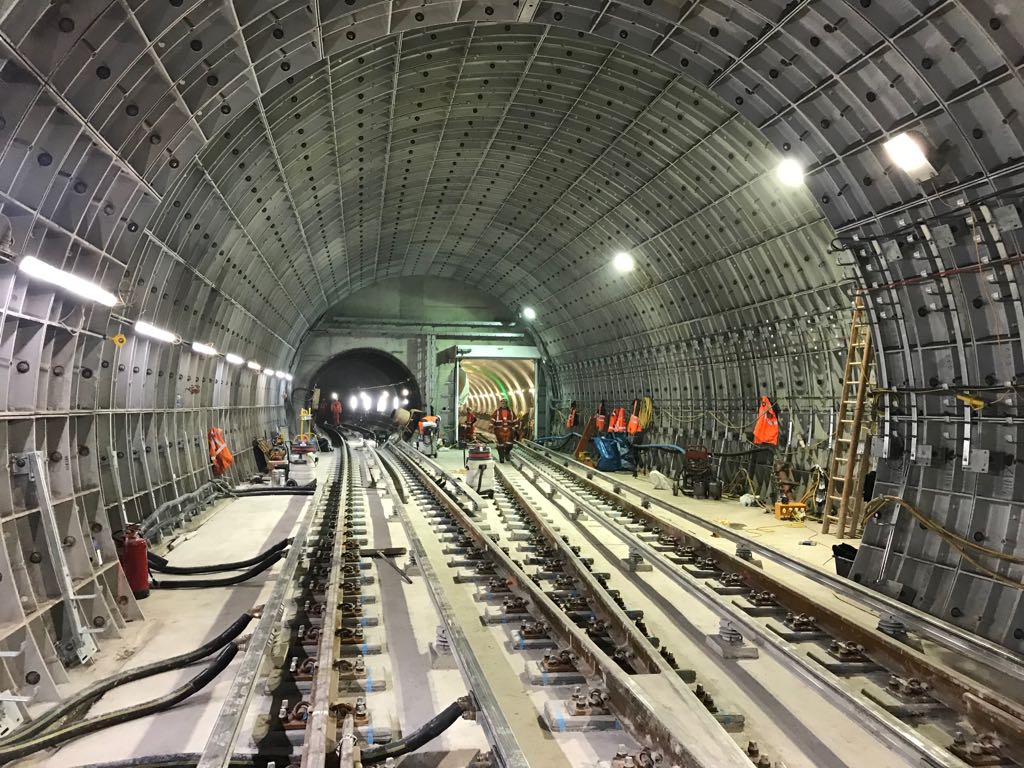
System requirements
As with any new railway, the list of systems needed to operate and control the line in its widest sense, is quite long. For the actual trains to run, the line needed signalling, track-to-train radio, high voltage power, an emergency traction discharge system, cooling and ventilation, cable routes for the various systems, track-to-train CCTV, and radio for staff communication and to the police, all of which have to be integrated into the existing Northern Line control operation. The integration process involved connection to the power control, the extension of the line’s WAN, the Northern Line control centre at Highgate where an additional control desk has been provided, the Northern Line communications network plus the central London Underground control and the link to the British Transport Police.
To achieve all of this, a 3D model was built using Building Information Management (BIM) techniques, from which the power and earthing, cooling, and ventilation, EMC compatibility, rolling stock adaptation, and space provision could be determined. Whilst all this was under the control of FLO, the contractor worked with TfL (Transport for London) specialists, to form an NLE Railway Systems team to manage the TfL overall scope.
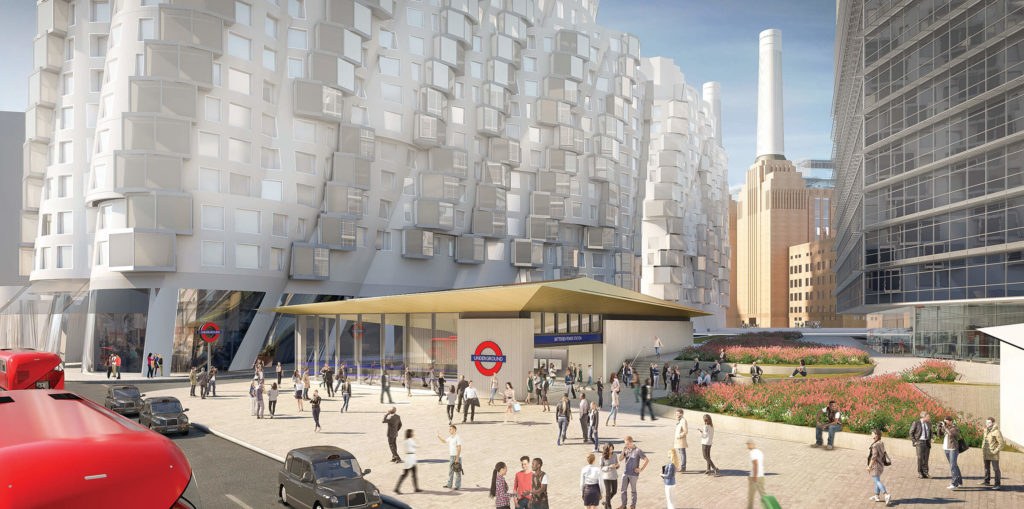
Challenges
Various challenges emerged: (i) radio cell enhancers and the cable management system needed 2D drawings to be cut from the 3D model and sent to the individual suppliers; (ii) Network integration for the individual station and shaft sites and how they are connected by the fibre cabling; (iii) communications integration to ensure provision protocols to the control centres, the BTP and links to end users.
Additionally, although no new rolling stock was required, the existing trains had to be modified for new destinations and routes including new in coach audio visual messaging, the train radio linkage, the Vital On Board Computer (VOBC) and the train management system. Also, the track to train CCTV safety system as required for the One Person Operation (OPO) platform to train interface with high quality images using on board split screens to ensure a complete viewing of the platform from the cab. The positioning of cameras was critical and had to take account of station lighting interference. The siting of the platform wall radiating cable needed careful design and positioning.
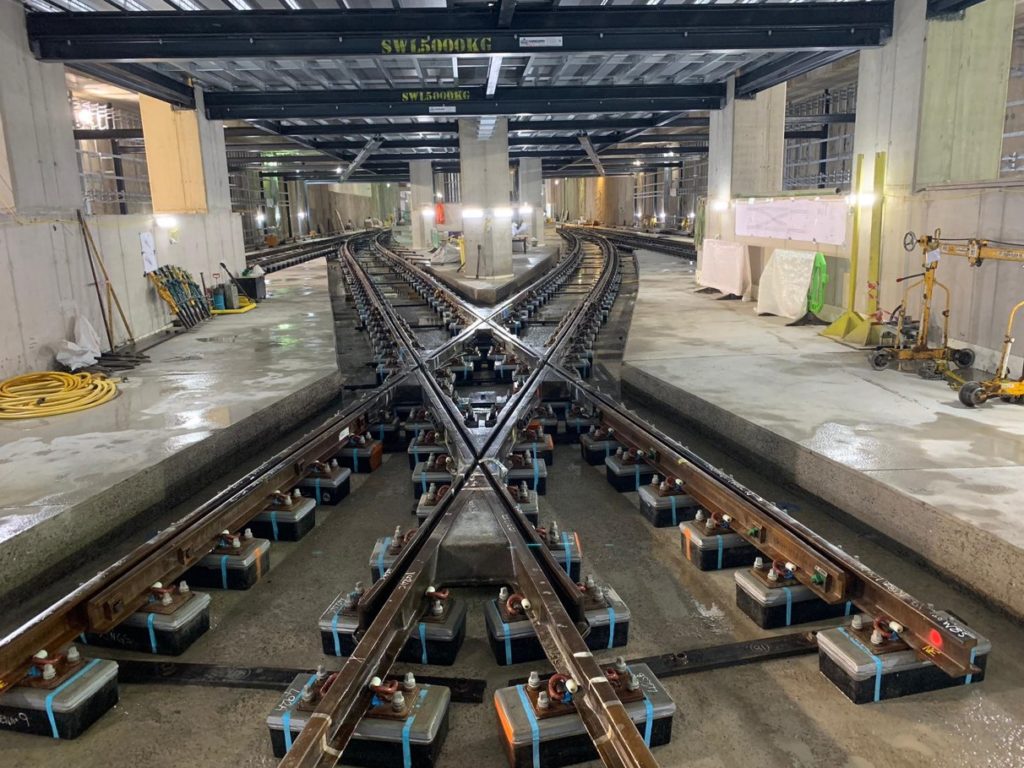
Signalling
The Northern Line had already been equipped with the Thales Seltrac Communications Based Train Control (CBTC) system with final cutover taking place in June 2014. A report of the project featured in issue 127 (May 2015). This was the second generation of the Seltrac system but, as so often happens with modern technology, a third generation of Seltrac is now available. This is being employed on the 4LM project for the Circle, District, Metropolitan, and Hammersmith & City lines but was deemed not readily ideal for the NLE as it is entirely radio based, whereas the Northern Line uses track loops. As such, a compromise solution was developed for the NLE which continues to use track loops but with a WiFi type radio link to the train instead of the former transmission based 56KHz system.
The third-generation equipment has been deployed for the station controller sub system at Battersea and on all of the wayside equipment, including links to the platform and concourse information displays. The main software has been imported from the existing Northern Line system. Updated software was needed for the system management centre to introduce new functionality at the Kennington area junctions. The second and third generation had to be interfaced including the trains needing a modification to read both types of track-based links. Cyber security was upgraded in the Thales contract and is more detailed and onerous than on the second-generation system.
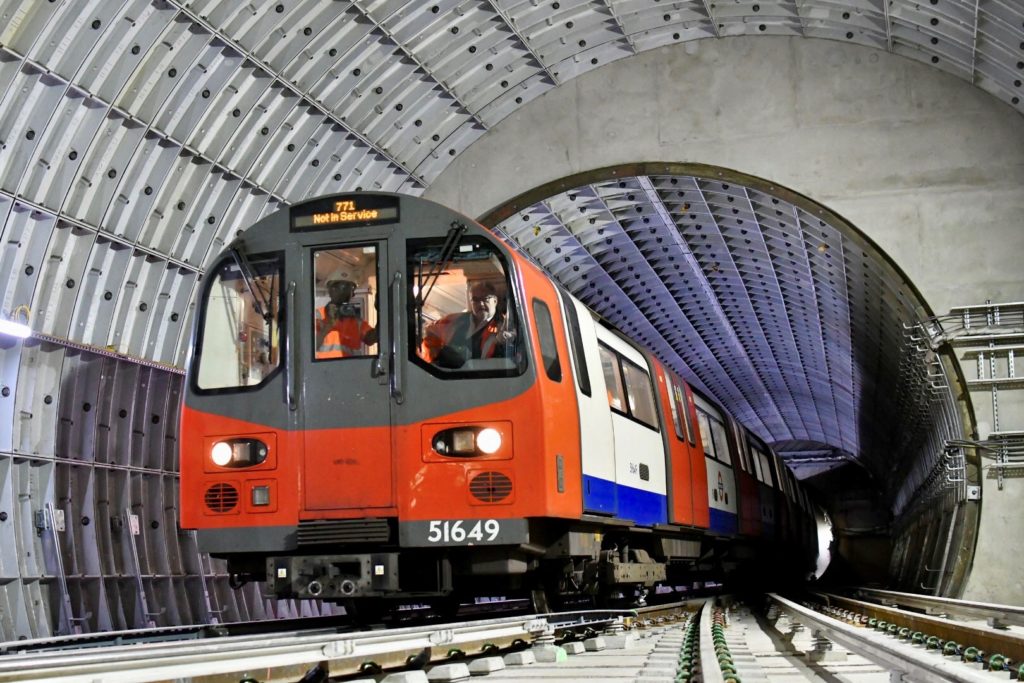
The portfolio of new signalling equipment required six new points ends using the Siemens Mobility Surelock machines with the motor mounted between the rails, new AzLM axle counters, and the inductive loop fixed on to the Sonneville low vibration track form. The red wire used for the inductive system needed critical positioning to ensure effective coupling and no cross interference to other tracks. A new third-generation Vehicle Control Centre (VCC) has been added to the eight existing second-Generation VCCs. Important interfaces associated with the signalling included links to the tunnel and public area ventilation systems.
Functionality changes
Two important functionality changes have been introduced. At low usage times – very early in the morning and late at night – the NLE operates as a shuttle service to Kennington. This means that trains arriving from Battersea into the northbound platform, must reverse in the ‘wrong’ direction around the half circle loop in order to get to the southbound platform. Trains can also be stabled overnight on the NLE rather than returning them to a depot.
The signalling has to remember where such trains are before the power is turned off for engineering hours. Trains must be positioned accurately and must store their locations. Axle counters are monitored to ensure no movement takes place. In the morning when power is restored, the train must see the first crossover as anticipated, whence it can enter normal running mode. If it fails to see the expected crossover, the storage data is failed, and an emergency brake application is made.
Since there are no local control panels, point maintenance is facilitated by a wall mounted key switch that enables technicians to swing the points if needed. This can only be carried out under strict safety procedures and the Seltrac system stores and reports all point status conditions.
Migration of the signalling system took place in five phases: (i) system design including the important work at Kenningtom; (ii) individual sub systems tested in isolation; (iii) dynamic testing of the system including use of test trains and boundary tests; (iv) trial operations including training of train staff; and (iv) system commissioned and start of service.
System planning & verification
As would be expected, a close control was kept on progress and validity of the work being carried out. An Activities Plan included the development of inspection and quality plans. An early strategic document was the Asset Commissioning Handover Management Plan which contained 24 documents describing the entire project to ensure effective integration. A 25th document brought all the 24 documents together.
The implementation and transfer of operational controls included a Signalling Review Panel with an independent chairperson and a Systems Review Group to track the overall programme and non-signalling elements. The main stages were to create an ‘Engineer’s Railway’, followed by trial operations of trains and stations with a period of shadow running, and then finally into revenue service. The entire project took six years from start of work to commissioning into public service.
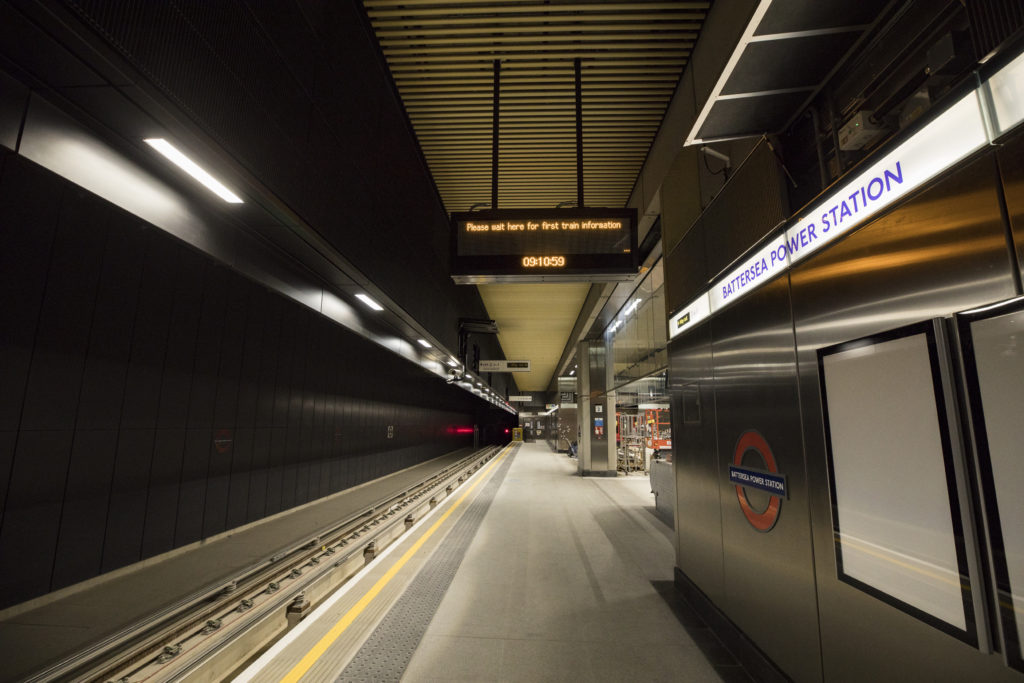
Cost and future intentions
The total project cost has been £1.1 billion which was £160 million under budget. This was funded by private capital mainly from the developers of the Battersea Power Station site plus other developers in the Nine Elms and Vauxhall areas.
A possible extension to Clapham Junction is envisaged but is unlikely to progress until plans for Crossrail 2 re-emerge from the doldrums.
Thanks are expressed to the lecture presenters: Lawrence Weller as the team leader, David Smith for the civil engineering aspects, Neil Johnson for details of the new systems, and Tom Stankowski who explained the signalling system.

